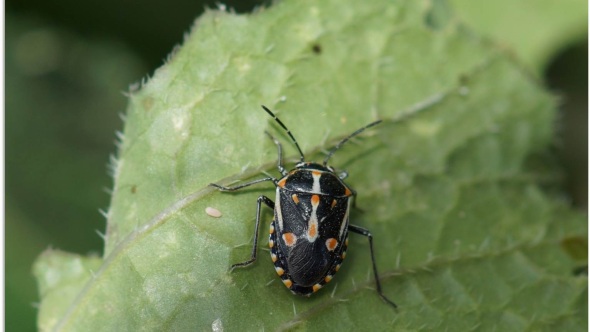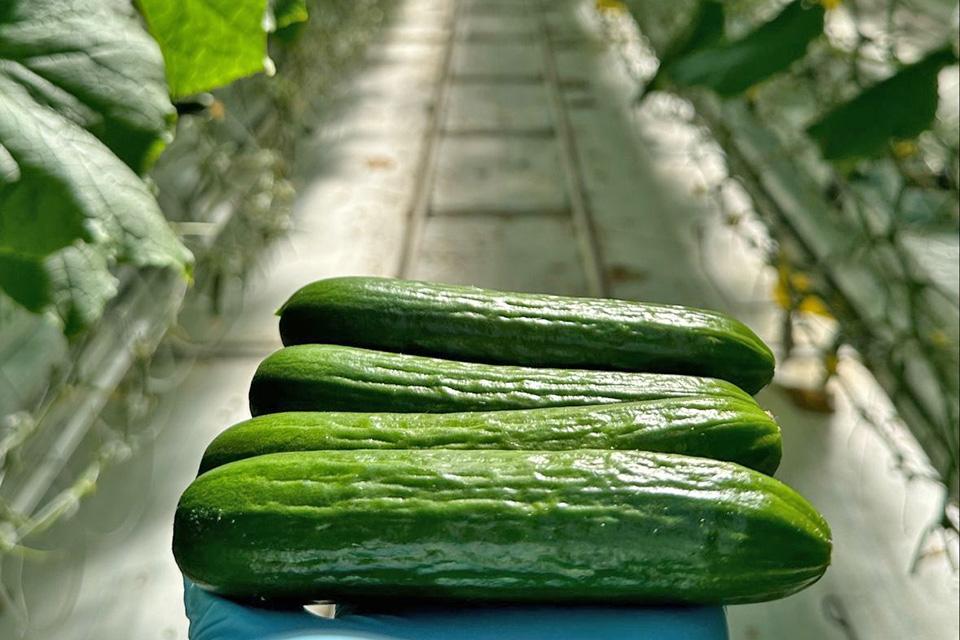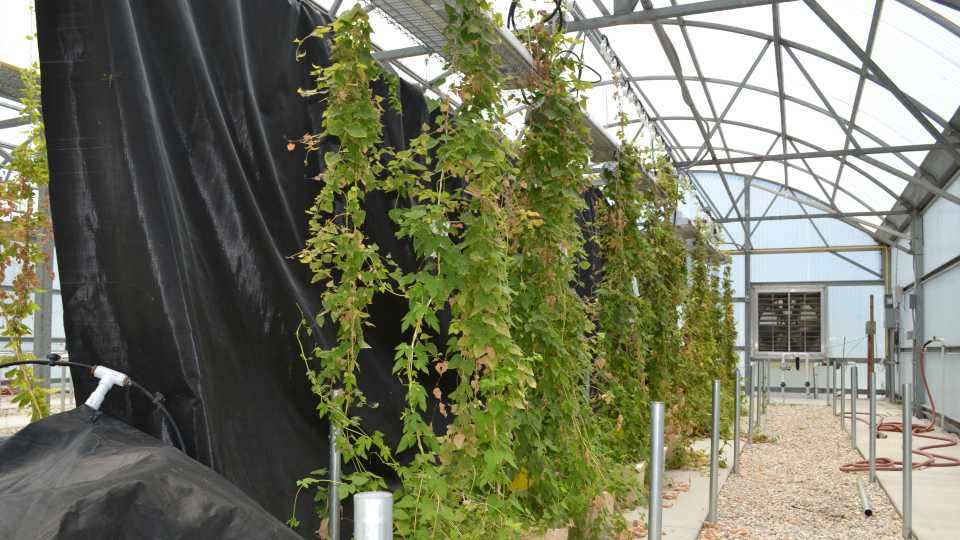Prepare For The Bagrada Bug
The bagrada bug has made quite the intercontinental trek, orginating in Africa and now making its presence known in California. Growers in the Golden State are becoming more familiar with this exotic pest — and none are too happy about it. It was responsible for extensive crop damage this year.
In Arizona, the bagrada bug is well established and is seen annually in cauliflower, broccoli, and other cole/brassica crops. It was first identified in Los Angeles, CA, in 2008, but really hasn’t been an issue for California growers until this year.
According to Surendra Dara, strawberry and vegetable crops advisor and affiliated IPM advisor at the University of California Cooperative Extension, the bagrada bug, which is a type of stink bug, has been reported in virtually all counties in Southern California and continues to move north.
In addition to brassicas, this year, damage was reported in California on carrots, corn, potatoes, sunflower, and tomatoes — among other hosts, which also includes several weed species. In a recent report, Dara says the pest was also found in strawberries and grapes but it may have been seen there as it was moving to find suitable food sources.
Researchers and pest control advisors (PCAs) alike say the population of the pest has greatly increased in the state. Dara says it is mainly a problem in the spring and again in the fall but but it depends on climatic conditions.
Weather may be contributing to the pest’s proliferation, he says. When warmer temperatures prevail, so do the bugs.
“Drier and warmer winter and spring conditions than previous years might have contributed to higher numbers and wider distribution of the pest this year,” he adds.
A Dangerous Pest

The bagrada bug has been wreaking havoc for Western growers producing cole crops.
Photo credit: John Palumbo
What makes the bagrada bug such a hazard in the field? Numbers, speed, and the extent of damage, Dara says.
“In some cases, they move to cultivated crops in large numbers in a short time and require a prompt management response,” he explains. “When the weed hosts in the wild dry out and bagrada bugs move to crop fields in large numbers, it becomes very difficult to manage them. Depending on the stage of the crop and the number of bugs, damage can be anywhere from a nuisance to complete loss of crop.”
Drilling down to damage specifics, John Palumbo, an entomologist with the University of Arizona, says the bagrada bug infests brassica crops at stand establishment.
“It can cause damage by outright killing newly emerged seedlings, or by feeding on the apical meristem (terminal growth) of established seedlings. This feeding damage results in a plant that will not produce a marketable crown or head. On head-forming brassicas, once the plant grows to the six-leaf stage or larger, susceptibility to feeding damage in the field is negligible. However, on leafy brassicas (kale, arugula, etc.) cosmetic damage on leaves can occur season long.”
Unlike in California, however, Palumbo says the situation with the pest is actually becoming better in the desert Southwest because PCAs and conventional growers have learned how to effectively manage the bug with minimal damage.
“They are achieving this by using effective insecticides in a very aggressive manner and properly timing the applications to minimize plant exposure to the pest,” he says.
The Organic Side
Conventional growers may have several tools in their collective toolbox to help control this pest, but that is not the case for organic producers.
“In an organic production system [bagrada bug] is very difficult to control with the tools we have,” explains Jim Wilkinson, a PCA and a certified crop advisor in Hollister, CA, who manages about 1,200 total acres, with organic brassica crops included in his portfolio.
The good news, according to PCA Charles Nieto, who covers organic acreage in Monterey and San Benito counties for Nieto Ag Consulting, is feeding doesn’t occur on every plant. The bad news is you may get up to 10% to 15% unmarketable heads of broccoli or cauliflower from one field. Nieto says the number of unmarketable heads he has seen in one field has been as high as 20% to 25%.
Bagrada feeding has been a big problem in spring mix, and Nieto says he has lost some acreage due to the pest chewing on the plants’ delicate leaves. The bagrada bug creates a “starburst” pattern on leaves when it feeds on spring mix and, as a result, he has lost areas of fields with mizuna, arugula, baby kale, and red and green mustards.
He also says populations have been so scattered that he will see huge numbers of the pest on one side of the Salinas Valley and about a quarter of that population on the other side.
“This could be because the area with the larger population is closer to the host plant on one side of the valley versus the other,” Nieto says. “Every field you go to is different in terms of the bagrada population.”
Control Options
Although there are a limited number of tools for organic producers, they do have some options. One cultural control Nieto has been using to keep the pest out of the main crop is the use of a trap crop, specifically sweet alyssum, which typically serves as a beneficial habitat.
He says sweet alyssum is “like candy to the bagrada bug. They will go for that before they go to anything else. We did 1/16 of an acre on one end of a field to use as a trap crop, and I found many bagrada bugs were in the trap crop. Unfortunately, I still found them in the cole crop, though.”
As several weeds are hosts to this pest, it is critical to keep an eye out for specific weed pests such as shepherd’s purse, which also happens to be the biggest weed problem in the Salinas Valley, Nieto says. Keeping the area surrounding brassica crops clear of weeds will help keep bagrada bug out, but comes with a high price tag as weeding is expensive, he adds.
Focusing on specific tools to combat this pest, Dara says he has been conducting some laboratory studies using various microbial, botanical, and other non-chemical alternatives.
“The entomopathogenic fungus, Beauveria bassiana (Mycotrol-O, BioWorks) appeared to be better than everything else,” he says. “Some growers have indicated that azadirachtin, a botanical insect growth regulator from neem seed, worked well against nymphs, but I haven’t evaluated it myself. Insecticidal soaps may also have potential. Since this is a difficult pest, using a variety of good tools in combination or rotation is always an important strategy.”
Wilkinson has addressed the problem by using short spray intervals using contact material.
“I have been doing preventive sprays, using short intervals between each spray, containing combinations of contact organic pesticides such as M-Pede (Gowan Company) and PyGanic (MGK) as well as Grandevo (Marrone Bio Innovations). This approach has helped suppress bagrada bug populations.”
On the conventional side, the University of Arizona’s Bagrada Bug Management Tips 2014 indicate that contact insecticides provide the most effective control during stand establishment. Soil-applied neonicotinoids and diamide insecticides don’t adequately prevent feeding damage to newly transplanted or emerging seedlings.
Once stands have become established, growers should use foliar sprays with pyrethroids (e.g., bifenthrin, Lambda cyhalothrin), chlorpyrifos, methomyl, and neonicotinoids (Venom, Valent U.S.A. and Scorpion, Gowan Co.), which can provide effective adult control. (To read more on bagrada bug management tips, go to http://bit.ly/1ydZYnw.)
Advice For Growers
As to be expected, the best way to tackle a pest problem is to learn as much as you can about it — in advance.
“Knowing as much as possible about the pest, its biology, vulnerable stages of crops and the pest, and available control options is always very important,” Dara says. “Crop rotation, weed management, avoiding non-crop plants that attract bagrada bugs, regular scouting, timely control with mechanical, chemical, or organic solutions are some of the options.”
Bagrada Bug Scouting Tips For 2015
As you get ready to plant your next brassica crop, it is important to have a proper bagrada bug scouting plan in place. According to John Palumbo, an entomologist with the University of Arizona, scouting should begin as soon as plants begin to emerge or soon after transplanting.
“Begin looking for [the bagrada bug] on the undersides of cotyledons and young leaves,” he says.
For transplanted cole crops, Palumbo advises scouting for the pest the morning after transplanting.
“The bugs can be difficult to find on plants when sprinklers are on,” he says. So, when sprinklers are turned off at night or early morning carefully inspect all the leaves for the presence of adults and fresh feeding symptoms. Also, carefully inspect the soil underneath the plant.”
On direct-seeded cole crop plantings, Palumbo says to begin scouting immediately upon seedling emergence. The pest has been observed feeding on broccoli seedlings just as the cotyledons are appearing.
“Damaged or desiccated seedlings that appear wilted can be a result of bagrada feeding,” he says. “On larger seedlings at the one- to two-leaf stage or larger, inspect for adults underneath cotyledons and leaves, as well as the stem at the soil surface.”
Inspecting plants during the early morning (from 6 a.m. to 8 a.m.) may be misleading, Palumbo warns. Adults are typically most active in fall cole crops fields from mid-morning to late afternoon, around 4 p.m. when temperatures climb above 90°F.
Palumbo again stresses the importance of where to look for feeding damage.
“When sampling for bagrada, look for fresh feeding signs on cotyledons and young leaves,” he says.
To find out more on how to manage bagrada bug, check out the Bagrada Bug Management Tips from the University of Arizona at http://bit.ly/1ydZYnw.










